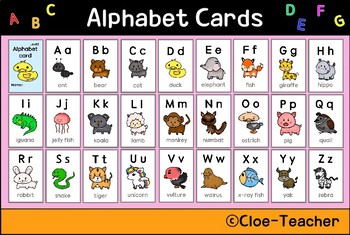

Practice that looks like play keeps engagement high, which is critical to successful learning. Teaching of both phonemic awareness and phonics should be explicit: clearly demonstrate, then provide student practice and feedback, and then gradually support more independence in your students. Phonemic awareness and letter-sound understanding share the best kind of friendship, where just by being together they help each other grow. That’s phonemic awareness supporting phonics. Conversely, it helps kids understand how decoding works when we connect word families-“cat,” “bat,” “hat”-to the substituting of one first phoneme for another, orally. That’s phonics supporting phonemic awareness. It helps kids to hear three phonemes in “cat” when they can connect those phonemes to letters. While many think of this instruction as being focused only on sound, research tells us that pairing sounds with visual letters in instruction is more effective. is the converging evidence of what matters and what works in literacy instruction, organized around models that describe the how and why. He science of reading is bigger than phonics. Finally, we move on to working with words that have more sounds, like “blast.” We want them to hear the first phoneme in a short word like “dog.” Then we need to systematically move focus toward those final and middle sounds, too.

First, we know it works to systematically and explicitly teach kids to hear and work with the phonemes, or individual sounds, within words. The science of reading clearly points to how teachers can best support the earliest stages of decoding. These two foundational components come together as kids sound out words. Phonemic awareness is about noticing sounds within words alphabet knowledge includes knowing what sounds letters stand for. With this kind of screening, the two biggies are phonemic awareness and alphabet knowledge. Screening for signs of dyslexia and other decoding difficulties homes in on those early, pre-reading skills that matter. Research tells us that by assessing particular early skills- even before kids can read words-we can zero in on those students likely to struggle with decoding if we don’t intervene. Here’s where the science of reading gets almost magical (except that it’s real). That means we want to find the right kids, the ones likeliest to really need the intervention, and we want to do it before they are actually falling behind in reading. Intervention really works best if it is, well, targeted and early. Early identification and intervention are criticalīecause decoding matters big time, it is imperative that we support decoding for those who struggle through targeted early intervention. Remember the Simple View of Reading? Once a student has strong word decoding skills, growth in reading comprehension becomes more dependent on language, including vocabulary and knowledge. Great word decoding is necessary for reading with understanding, but it is not sufficient. Kids need to navigate a language where ‘dot,’ ‘taut,’ and ‘thought’ all rhyme. That makes sense: if a student can’t read the words at all, then they sure can’t read them with understanding. Particularly for elementary readers, improving word decoding gives kids a big boost in comprehension, in both the near and long term. When researchers investigate what matters in literacy instruction, they look at how a component skill affects growth in the bigger domain of reading with comprehension. In this post, I’ll focus on one piece: word decoding (and, yes, that means we get to talk about phonics). We’re not talking about one study, here we’re talking about decades of accumulated and evolving insight from well-designed research.Ī lot goes into teaching kids to read with comprehension. Research addresses both what kinds of skills matter for that outcome and what kinds of teaching works well for getting there. What’s a “good reading outcome”? Ultimately, our goal is kids showing strong comprehension of challenging texts. Phonics grabs a huge share of conversations about elementary literacy for good reason: critical to understanding the science of reading is understanding how good instruction in word decoding supports good reading outcomes in English. It refers to how letter patterns represent sounds-and how we teach those patterns. The science of reading is the converging evidence of what matters and what works in literacy instruction, organized around models that describe the how and why. You want to talk about phonics!įirst off, let’s be clear that the science of reading is bigger than phonics. Yeah, yeah, we hear you, science of reading fans.


 0 kommentar(er)
0 kommentar(er)
